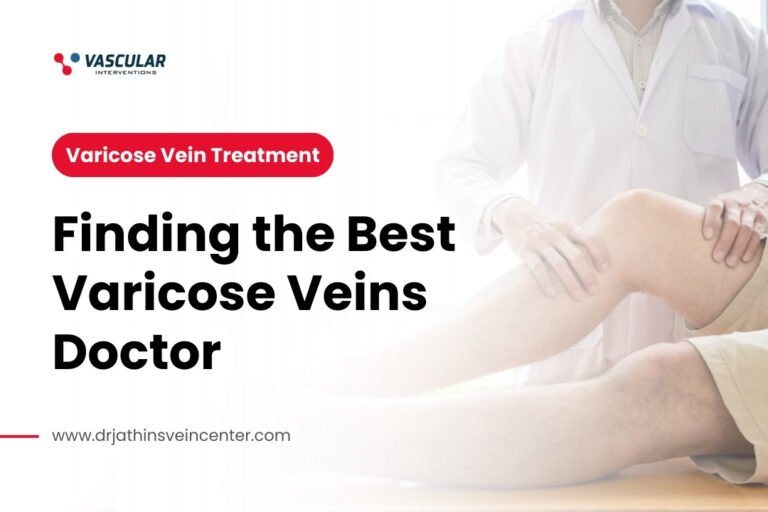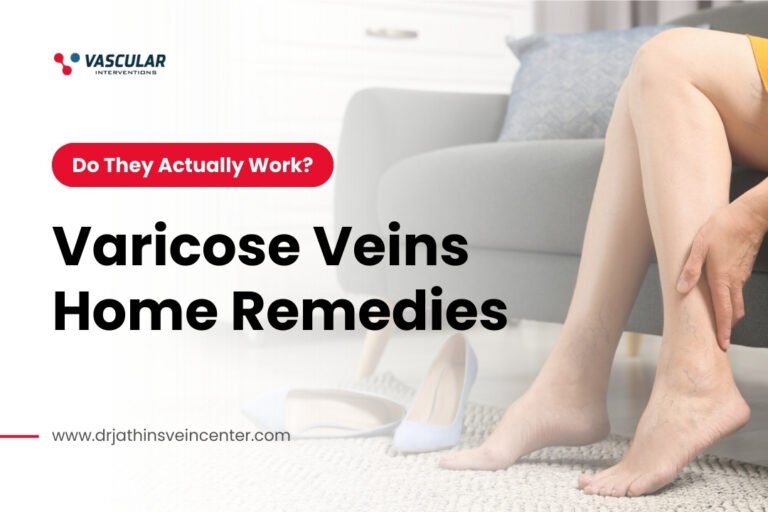Varicose veins and deep vein thrombosis (DVT) are prevalent medical conditions with a significant global impact. The former is frequently perceived as a cosmetic concern, whereas the latter is a critical and potentially fatal ailment that demands prompt medical intervention. However, emerging scientific evidence indicates a plausible association between these two conditions, which has sparked apprehension among healthcare practitioners and patients alike. Specifically, individuals with varicose veins may face an augmented risk of developing DVT, and this newfound understanding necessitates a closer examination of potential preventive and management strategies.
This article endeavors to examine the correlation between varicose veins and DVT, delineating the plausible hazards and cautionary signals that one should be mindful of. The underlying origins of both ailments will be thoroughly analyzed, alongside a comprehensive exploration of the most efficacious therapeutic alternatives obtainable. Furthermore, preventative measures to forestall the onset of varicose veins and DVT will be elucidated, underscoring the indispensability of sustaining a salubrious lifestyle and promptly seeking medical intervention upon perceiving any indications of affliction.
Understanding varicose veins and DVT
Varicose veins and deep vein thrombosis (DVT) are frequently interrelated conditions, commonly encountered in clinical practice. Varicosities are dilated and tortuous veins that predominantly affect the lower extremities, resulting in discomfort, swelling, and pain. On the contrary, DVT is a grave complication that arises when a clot forms within a deep vein, usually in the lower limbs, and may lead to edema, distress, and potentially fatal sequelae.
Although varicose veins and deep vein thrombosis (DVT) are distinct medical conditions, their association cannot be overlooked. The presence of varicose veins raises the probability of DVT development. This article delves into the correlation between varicose veins and DVT, highlighting the risk factors that predispose individuals to these ailments. By grasping these crucial aspects, individuals can adopt proactive measures and seek prompt medical intervention when necessary to safeguard their general health and wellness.
Common symptoms and risk factors
Varicose veins are a prevalent medical ailment that afflicts countless individuals worldwide, characterized by the enlargement and twisting of veins. Despite their visual and physical discomfort, this condition is seldom life-threatening. However, patients with varicose veins may face an augmented likelihood of developing deep vein thrombosis (DVT), a severe ailment that arises when a blood clot forms within the deep veins of the body.
Typical indications of deep vein thrombosis encompass inflammation, sensitivity, discomfort, elevated temperature, and erythema in the afflicted region. Risk factors for DVT encompass advancing age, corpulence, gestation, usage of hormonal contraceptives, smoking, and a hereditary disposition to the ailment. It is of paramount significance for individuals exhibiting varicose veins to remain cognizant of these possible hazards and to pursue medical attention in the event of any DVT-related symptoms.
The relationship between the two
The correlation between varicose veins and deep vein thrombosis (DVT) is a critical area of investigation, given the evident association between these two ailments. Varicose veins manifest when faulty valves within the veins result in blood accumulation and subsequent bulging of the veins. Conversely, DVT develops when a clot forms in one of the deep veins, typically in the lower extremities.
Though varicose veins are not a direct causative factor for deep vein thrombosis (DVT), an intricate link exists between the two conditions. The presence of varicose veins escalates the likelihood of developing DVT. This is attributable to the impaired blood flow in the legs, which can instigate blood clot formation. Consequently, it is imperative to comprehend the association between varicose veins and DVT in order to efficiently identify and manage possible risks.
Complications and potential dangers
Varicose veins and deep vein thrombosis (DVT) are two distinct yet significant venous disorders that can impact the human body. Although varicose veins are often regarded as a milder ailment, they can pose potential health risks if left unattended. One such risk is the development of venous ulcers, which are open wounds that form on the skin. Venous ulcers can be excruciating and challenging to manage, and their improper treatment can lead to severe infections and further complications. Hence, it is crucial to address varicose veins and their associated complications promptly with appropriate medical interventions to ensure optimal patient outcomes.
Furthermore, the development of varicose veins can elevate the potentiality of thrombus formation within the afflicted veins, ultimately resulting in deep vein thrombosis (DVT). DVT is a critical ailment that can yield excruciating discomfort, inflammation, and various other indications. In serious instances, DVT can even be life-threatening if the blood clot migrates to the lungs. As such, prompt medical intervention is crucial if you are exhibiting symptoms of varicose veins or have a familial background of DVT.
Preventative measures and treatment options
Effectively managing the inherent risks that accompany the development of varicose veins and deep vein thrombosis (DVT) requires the implementation of preventative measures and treatment options. These measures encompass a range of lifestyle choices, including maintaining a healthy weight, engaging in regular physical activity, and avoiding extended periods of sitting or standing. Furthermore, the utilization of compression stockings may be recommended to augment blood flow within the legs. By implementing these strategies, individuals can significantly mitigate the potential risks associated with these conditions.
Treatment options for varicose veins may include minimally invasive procedures such as sclerotherapy or endovenous laser treatment. For DVT, anticoagulant medications such as heparin or warfarin may be prescribed to prevent blood clots from forming or getting larger. In severe cases, surgical intervention may be necessary. It is important to consult with a healthcare professional to determine the best course of action for preventing or treating varicose veins and DVT.
Conclusion
Comprehending the correlation between varicose veins and deep vein thrombosis (DVT) is of utmost significance. Despite varicose veins being a widespread and relatively harmless ailment, they can heighten the likelihood of DVT.
Seeking advice from a medical professional to assess your DVT risk and establish any preventative measures, if necessary, is crucial if you possess varicose veins. By adopting a proactive approach and prioritizing the maintenance of your vascular health, you can mitigate the chances of serious complications and uphold your standard of living.


